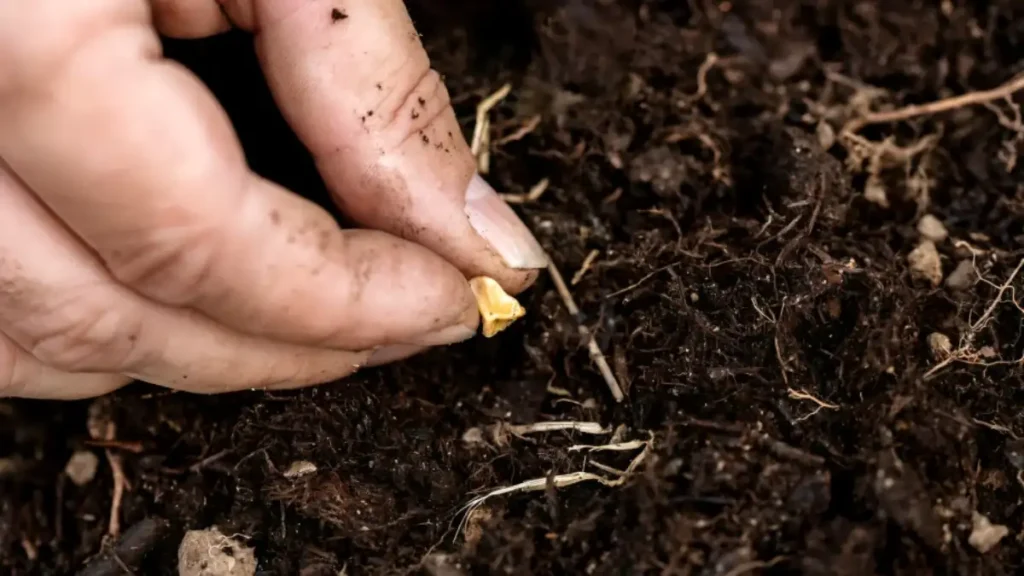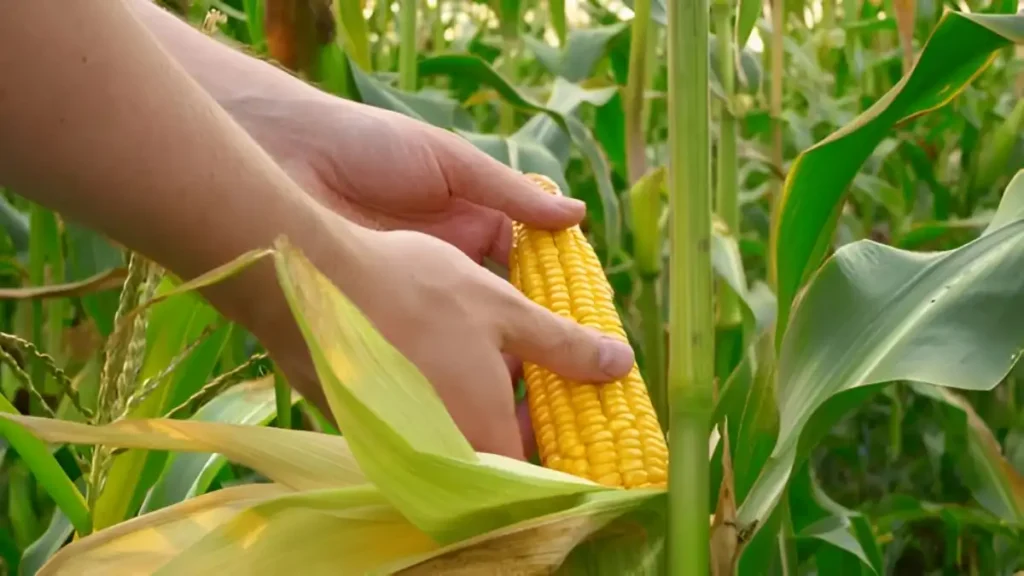It’s a satisfying experience to grow sweet corn in your yard since you can eat the freshest, tastiest corn right from the stalk. Sweet corn grows quickly, forming towering stalks with vivid green leaves. One corn plant typically yields one or two ears in a home garden; you can select types with kernels that are yellow, white, bicolored (yellow and white), or even rainbow-colored. Although it is usually eaten raw on the cob, it can also be frozen, tinned, or used in other recipes. Sweet corn, a favorite summer crop, is high in fiber, vitamins, and antioxidants. It tastes great cooked, grilled, or added to soups and salads. Growing sweet corn properly needs careful planning and attention to detail, regardless of gardening experience level. We’ll cover everything in this tutorial, from planting to harvesting, so you’ll have all the information you need to grow impressive sweet corn.
This is all the information you need to plant and grow corn in your garden:
1. Selecting the proper type of sweet corn
Choosing the correct variety of sweet corn is critical to success. Three main types of sweet corn exist:
- Standard (su): The standard variety with a more conventional taste. It is less delicious than newer varieties, but it matures faster and is more hardy in cooler areas.
- Sugar-enhanced (se) – These varieties have a higher sugar content, resulting in a sweeter taste while maintaining the soft texture of regular corn.
- Supersweet (sh2) – This kind contains the most sugar, producing a significantly sweeter and crunchier texture. However, it is more sensitive and needs warmer growing conditions.
2. When to grow sweet corn: Best season
Sweet corn thrives in warm conditions, so planting should occur in late spring or early summer after the last frost when soil temperatures are around 60°F (15.5°C). In regions with shorter summers, plant as soon as the soil warms up to ensure crop maturity before fall frosts.
3. Where to grow sweet corn: optimum place for planting
- Corn, a sun-loving plant, requires a location with full light for six to eight hours daily. Properly position it in well-draining soil to prevent waterlogging, which can hinder root growth.
- Since corn is a heavy feeder, it is important to have rich soil that is rich in nutrients, particularly nitrogen. To increase soil fertility before planting, incorporate well-rotted manure or compost into the soil.
- Remember that the shorter crops are shaded by the tall stalks. Plant it next to crops like Asian greens or lettuce that benefit from shade from the summer sun. Steer clear of windy areas as high gusts may topple the long stalks.

4. The secret to a healthy crop is soil preparation
- Sweet corn thrives in well-drained, loamy soil with a pH of 6.0 to 6.8, so it’s essential to prepare the soil before planting. Check pH and nutrient levels, make amendments, add organic matter, ensure adequate drainage, and use balanced or high-nitrogen fertilizer for corn development. Improve structure and nutrient availability.
5. Planting Advice: Proper timing and spacing are important
- To plant sweet corn, space the seeds in rows 30 to 36 inches apart, 1-2 inches deep, and 8 to 10 inches apart. Plant in blocks of four rows side by side for best pollination. Plant one variety at intervals of 12 to 14 days, or plant other types that mature at different dates. To choose early, mid-, and late-season cultivars for a longer harvest season, compare days to maturity.
How to grow sweet corn with proper care:
- Sweet corn requires weekly watering, ideally, 1 to 1/2 inches, to thrive during germination and silking stages. Overhead watering can cause fungal diseases, while mulching helps control soil temperature, prevent weed growth, and preserve moisture.
- Sweet corn requires a significant amount of nutrients for rapid growth, even in compost-treated soil. To ensure growth, mix balanced fertilizer with well-rotted manure or compost before planting. Side treat rows with high-nitrogen fertilizer when stalks reach 8 inches tall.
- Growers of corn may face issues due to a few pests. Before or while the seeds germinate, crows and other birds may peck the ground and take them. Use a row cover to protect your plants from birds and attach it with pins, soil, or rocks for young seedlings. After three or four weeks, take off the cover to give the plants room to grow.
- Harvesting sweet corn is crucial for achieving the best flavor and texture. It’s ready when silks turn brown but husks remain green. Press a kernel to determine ripeness, and when a creamy fluid emerges, the corn is ready for gathering.

Conclusion:
Grow sweet corn in your yard yields fresh, tasty corn for your meal, making it a rewarding and fun activity. By following the advice in this article, from selecting the appropriate type to harvesting at the perfect time, you’ll be well on your way to a good sweet corn crop.
Certainly! If you’d like to learn more, please consider following our WhatsApp Channel: Harvest Gardening
A frequently asked questions:
Q1: How long does it take to grow sweet corn?
A1: Sweet corn typically takes 60-100 days from planting to harvest, with most varieties ready for harvest in 75 days.
Q2: Can you grow sweet corn in raised beds?
A2: Raised beds can grow sweet corn if they are deep enough, 12 inches deep, and spaced appropriately for pollination and air circulation.
Q3: How to grow sweet corn in containers?
A3: Use big pots (at least 12 inches deep and wide) to produce sweet corn in containers, and put multiple seeds in each to ensure adequate pollination. Make sure the soil drains well, give the pots regular waterings, and position them in direct sunlight.



